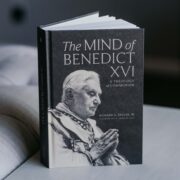This December marks the 80th anniversary of the publication of C.S. Lewis’s great classic, The Abolition of Man, which is comprised of three talks Lewis had given earlier that year, in February 1943, under the auspices of the Riddell Memorial Lectures at the University of Durham. (The book bears the title of the third lecture.) Even though invited lecturers were asked to address topics at the intersection of religion and contemporary thought, Lewis pitches his argument throughout at a philosophical rather than theological level; the appeal is to reason rather than to faith. Although already widely known as a Christian apologist, the distinction Lewis wants to draw here is between those who affirm the reality of objective truth and values and those who deny it. One could classify this book, then, as a work in pre-apologetics or pre-evangelism since it helpfully prepares the ground for the fruitful reception of the Gospel.
One way to read The Abolition of Man is as a sustained defense of the three transcendentals—beauty, goodness, and truth. Thus, the first lecture takes up the defense of beauty against those who would reduce our experience of the beautiful to simple projections of our own emotions or feelings. From this subjectivist point of view, beauty is only in the eyes of the beholder; it does not inhere in the objects themselves. For Lewis, the practical consequences of this “poison of subjectivism,” as he calls it in another lecture he gave that same year, are catastrophic not only for the educational enterprise but for society more generally.
For Lewis, the poison of subjectivism eviscerates goodness as well as beauty.
By depriving the young of the benefit of a properly developed aesthetic imagination, the new education only manages to produce “trousered apes,” in Lewis’s memorable phrase. In the process, they “have cut out of [the student’s] soul” the possibility of having ennobling experiences. The result, quite predictably, is “Men Without Chests,” in the title of the first lecture. As the stable sentiments of a well-ordered soul, the chest for Lewis represents “the indispensable liaison officer” through which the head (cerebral man, or spirit) rules the belly (visceral man, or the animal part of us). Lewis concludes the first lecture with a widely quoted passage in which he drives home the dilemma modernity has created for itself:
In a ghastly simplicity, they remove the organ and demand the function. We make men without chests and expect of them virtue and enterprise. We laugh at honour and are shocked to find traitors in our midst. We castrate and bid the geldings be fruitful.
As the above quote suggests, for Lewis the poison of subjectivism eviscerates goodness as well as beauty. Already in the first talk, he broaches a topic that he develops more fully in the second lecture, which he entitles “The Way.” What forms genuine moral goodness in us? Living according to the precepts of practical reason, of the natural law, of the Tao (or Way). To abandon the Tao is to lose one’s Way; it is to cast aside the basis for any solid system of values, and with it the very possibility of human temporal flourishing. As Lewis warns, outside the Tao, what remains is only will and power, or, we could add, the combination of the two in the Nietzschean will-to-power.
Lewis shows that the principles of the Tao are found across cultures and religious traditions, and he includes an appendix that references a wide range of sources—from Norse mythology to Babylonian hymns—to make his point. What is common in all these, Lewis observes, “is the doctrine of objective value, the belief that certain attitudes are really true, and others really false, to the kind of thing the universe really is and the kind of things we are.” But though universal in nature, Lewis does not believe that the Tao can be “proven” in any strict sense; instead, its precepts are self-evident. As he argues, however, “if nothing is self-evident, nothing can be proved.” Accordingly, he cautions that “you must not hold a pistol to the head of the Tao.”

The underlying impulse of the modern project from Bacon on, as Lewis explains in the third and final lecture, is man’s conquest of nature through the application of science. Lewis does not disparage the many good things that have resulted from technological progress. Untethered from the Tao, however, he fears that the process has turned increasingly deadly. And he foresees that the final stage in the conquest over nature will involve training the power of technology on human nature in a quest for absolute self-mastery. What this Promethean project obscures is the truth about the human person. As Lewis chillingly predicts, “Man’s final conquest has proved to be the abolition of man.”
Lewis maintains that only one thing—the Tao—“can overarch rulers and ruled alike.” That is why “a dogmatic belief in objective value is necessary to the very idea of a rule which is not tyranny or an obedience which is not slavery.” Without this restraint on what he labels society’s Conditioners, their rule will inevitably produce a “post-humanity,” even in democratic countries.
Who can doubt that since Lewis’s time, technology increasingly has been deployed to modify human nature, or that powerful high-tech corporations and what Lewis calls the “omnicompetent state” exert ever greater control over whole populations, or, most ominously, that the Tao has receded even further from our Western consciousness? Lewis introduces a hopeful note toward the end when he holds out the possibility of a new non-reductionist natural philosophy (a “regenerate science,” as he calls it). To develop that idea further, however, would have required him to abandon a philosophical posture and enter theological terrain, which he readily takes up in his many other writings but studiously avoids in this sobering, prophetic book.
